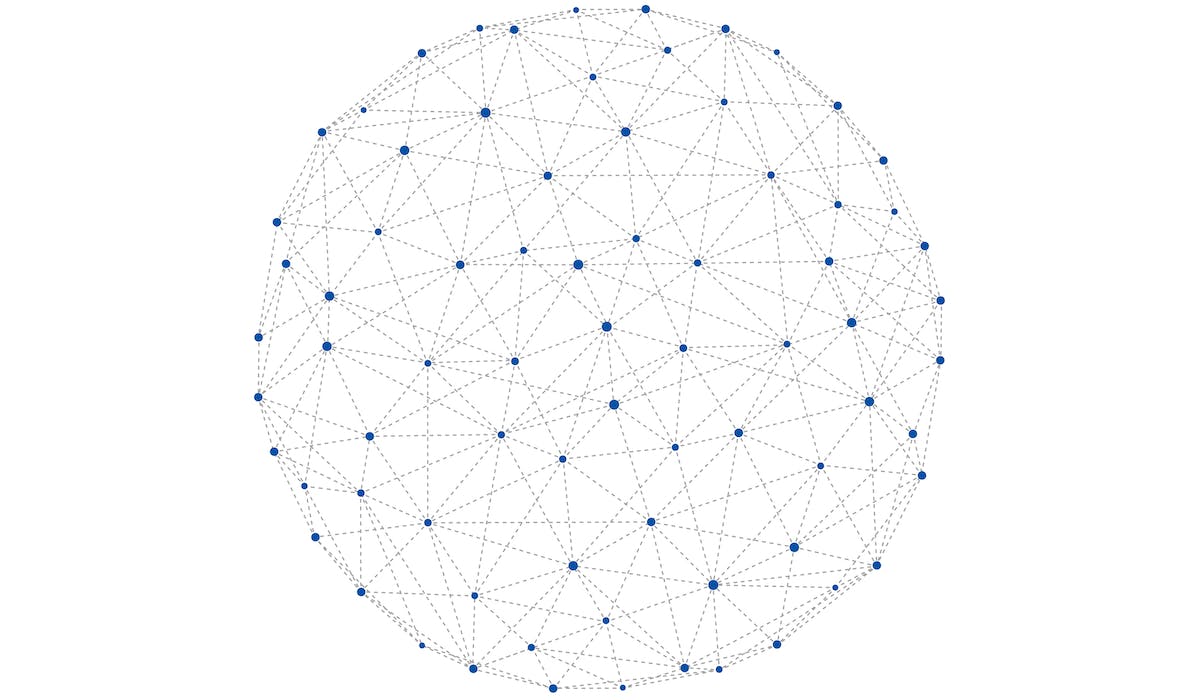
The LEI future eliminates unnecessary data duplications for clients and financial institutions.
Legislators have increasingly called for greater transparency in domestic and especially international financial transactions in recent decades. This is due to the need to curb crime, notably terrorist financing and money laundering. The regulatory environment has progressively extended the list of information that must be collected and stored about customers to achieve this.
This has led to a double burden: on the one hand, Anti Money Laundering (AML) and Know Your Customer (KYC) regulations and the related mandatory administration became stricter every year; on the other hand, the democratization of the market also forced traditional institutions to move to a higher level of customer experience.
The market has found the possibility of significant improvement primarily by removing redundant activities in the issuance of legal entity identifiers (LEIs).
What is the LEI?
The LEI code stands for Legal Entity Identifier, used to uniquely identify a company, akin to a unique tax number. It is required for all firms that have an investment account whether or not they engage in a single derivative transaction. An LEI code can only be assigned to one company, and if a firm has more than one investment account, it must have only one LEI code.
The LEI code consists of 20 alphanumeric characters (a mixture of numbers and letters), according to The International Organization for Standardization (ISO) 17442. It can be used worldwide to uniquely identify a legal entity involved in financial transactions, which includes:
- a company;
- a bank;
- an insurer;
- a stock exchange company;
- an exchange trader;
- investment fund and
- pension fund
LEI on a global level
The LEI code was designed to improve market-wide transparency by the Global Legal Entity Identifier Foundation (GLEIF) in June 2014. The Regulatory Oversight Committee, which represents public authorities worldwide that have joined forces to advance openness in global financial markets, supports and oversees the foundation.
The Global LEI Index is made accessible by GLEIF, the only global online source of open, standardized, and high-quality legal entity reference data. GLEIF makes it possible for consumers and organizations to make better, less expensive, and more responsible business decisions.
Consumers and organizations to make better, less expensive, and more responsible business decisions.
Implementing a new Validation Agent Framework inside the Global LEI System has aided efficiency, a move that may eliminate many of the pain points previously experienced by customers and financial companies during onboardings.
GLEIF oversees a global network of issuing organizations that provide trustworthy services and open, accurate data for unique legal entity identification. The purpose of the LEI initiative’s backers was to utilize the LEI to promote transparency in the derivatives markets following the financial crisis.
The LEI’s ability to help existing tedious processes isn’t limited to KYC. With the growth in fraudulent activities, more regulatory scrutiny, and a more important requirement for precise and trustworthy data for client identification in payment transactions, the LEI has become an essential property for automated transaction due diligence on the flight of a payment
According to the GLEI vision statement, when wholly implemented by market participants, the Global LEI Index will eliminate the time and effort required to maintain entity reference data, allowing market players to save money, simplify and speed processes, and acquire a better understanding of the global marketplace.
Cross-border Payments Task Force and other initiatives
The BIS, the Bank for International Settlements, has established a special task force to assist Central Banks in managing financial and monetary stability to increase the transparency of international financial flows. The Cross-border Payments Task Force of the Committee on Payments and Market Infrastructures (CPMI) was established in December 2021.
Faster, cheaper, more transparent, and inclusive cross-border payments would offer enormous advantages for individuals and economies worldwide, boosting economic growth, international commerce, global development, and financial inclusion while guaranteeing safety and security.
The CPMI saw the LEI’s potential in achieving its vision and urged its usage in payments throughout the world. The new ISO 20022 standard addresses this need by allowing a dedicated data element in the payload. Starting from November 2022, it will be an international standard for payment communications. Separate parties and systems will be able to interact with each other to accomplish functions by standardizing data formats in payment communications.
Removing unnecessary duplications
ISO 17442 standard defines the attributes or reference data of legal entities, which are the main elements of identification. The Legal Entity Identifier (LEI) code itself is neutral, with no embedded intelligence – or country code – that could create unnecessary complexity for users.
ISO 17442 specifies the minimum reference data provided for each LEI. Such data is typically referred to as Level 1 data:
- The legal name of the legal entity in official records;
- The legal entity’s registered address;
- Country of incorporation;
- Codes indicating the names of countries and their subgroups;
- Date of the first allocation of LEI, date of the last update of the data of LEI, and expiration date, if applicable; and
- In addition, clients usually must present many additional papers, including documentation about their legal position and ownership structure.
As can be seen above, the information needed to receive the LEI code is nearly identical to the anti-money laundering and KYC data financial institutions must collect. Duplicate proofing is unnecessarily demoralizing from a customer experience point of view. However, it could not be eliminated earlier due to the lack of data reconciliation between banks and other financial institutions and LEI code issuing bodies.
The finance industry is working on programs and tools that enable market players to access the necessary information to overcome duplication. One of the initiatives is Validation Agent Framework.
The LEI future eliminates excessive data repetitions for clients and financial institutions.
In recent decades, legislators have increasingly called for greater transparency in domestic and international financial transactions. This is due to the need to curb crime, notably terrorist financing and money laundering. The regulatory environment has progressively extended the list of information that must be collected and stored about customers to achieve this.
This has led to a double burden: on the one hand, Anti Money Laundering (AML) and Know Your Customer (KYC) regulations and the related mandatory administration became stricter every year; on the other hand, the democratization of the market also forced traditional institutions to move to a higher level of customer experience.
The market has found the possibility of significant improvement primarily by removing redundant activities in issuing legal entity identifiers (LEIs).
Applications
GLEIF has found an opportunity to enhance efficiency by introducing a new operational function inside the Global LEI System: The Validation Agent, to facilitate voluntary adoption and usage of LEIs across a more extensive portfolio of non-regulatory banking business lines. Financial institutions acting as Validation Agents can communicate with Registration Agents on behalf of their clients to ensure that these necessary checks have been completed without the customer having to do anything.
In addition to helping banks and other financial market players save money and improve their data management, the Validation Agent Framework allowed them to expand their usage of the LEI beyond capital markets. This included numerous business lines, resulting in considerable customer onboarding savings. It has also opened the door for financial institutions to make the LEI code and its benefits available to smaller customers.
As of October 2021, the Asian Development Bank estimated the unmet global demand for trade finance at $1.7 trillion. The Validation Agent Framework system allows financial institutions to channel a significant part of this into the LEI.
Validation Agents may use the LEI to automate the connection of entity data from different and external sources. According to a McKinsey analysis, This alone would save the global banking system $2-4 billion each year.
Applications in the domain of sustainable finance are equally intriguing. LEIs can speed data collection, consolidation, and analysis of ESG risks for unlisted private enterprises, where there is less systematic coverage. LEIs are a valuable weapon in the data-gathering armoury since comparable ESG data is still challenging for lenders and investors, primarily private enterprises.
LEIs in numbers
The numerous benefits of the system are well understood by financial institutions and, at the same time, increasingly well accepted by customers, as confirmed by the growth figures published for 2022. More than 65,000 new LEIs were granted globally in the first three months of the year, according to GLEIF. The total number of LEIs issued increased by 3.3 per cent, bringing the total number of active LEIs to over two million.
In 2022, for the first time, Indian businesses and organizations must get an LEI. India’s position among GLEIF’s top five growth countries for LEI issuance in 2020 and 2021 reflects the ensuing increase in demand for LEIs in recent years. The country’s yearly issuance increased by 45.6 per cent and 62.4 per cent in those two years, respectively.
GLEIF announced that the total number of LEIs granted across the country had reached 76,432 by 2021. And according to the organization, demand will continue to rise exponentially in 2022 and beyond as more and more entities register for LEIs in response to current and future obligations.
Enhancing the client experience
Process duplication is an issue that has to be addressed immediately as clients and financial institutions seek to increase revenues while lowering operational expenses. Financial institutions may profit from a substantially simplified and cost-effective LEI issuing process for customers by serving as Validation Agents, resulting in a faster and more rationalized client onboarding experience.
Customers are gravitating toward providers that can offer the fastest and easiest service. It is no different in the financial markets. Here, those financial institutions that are pioneers of digitization can stand out.
At the same time, it pays for customers to prepare for mandatory data transfer as soon as possible because, without it, the business could be hampered or even cease. Companies considering international transactions should start applying for LEI as quickly as possible.




